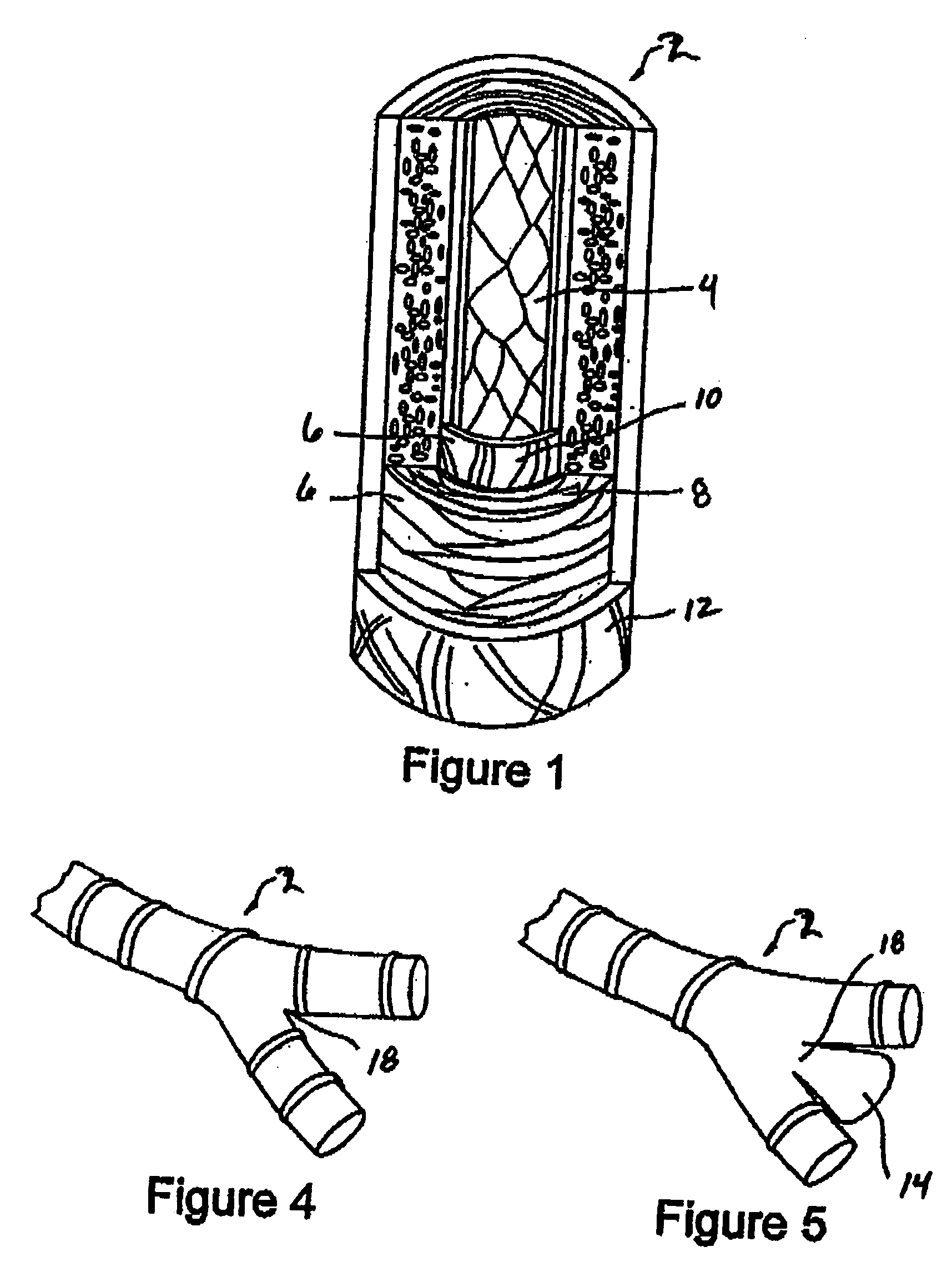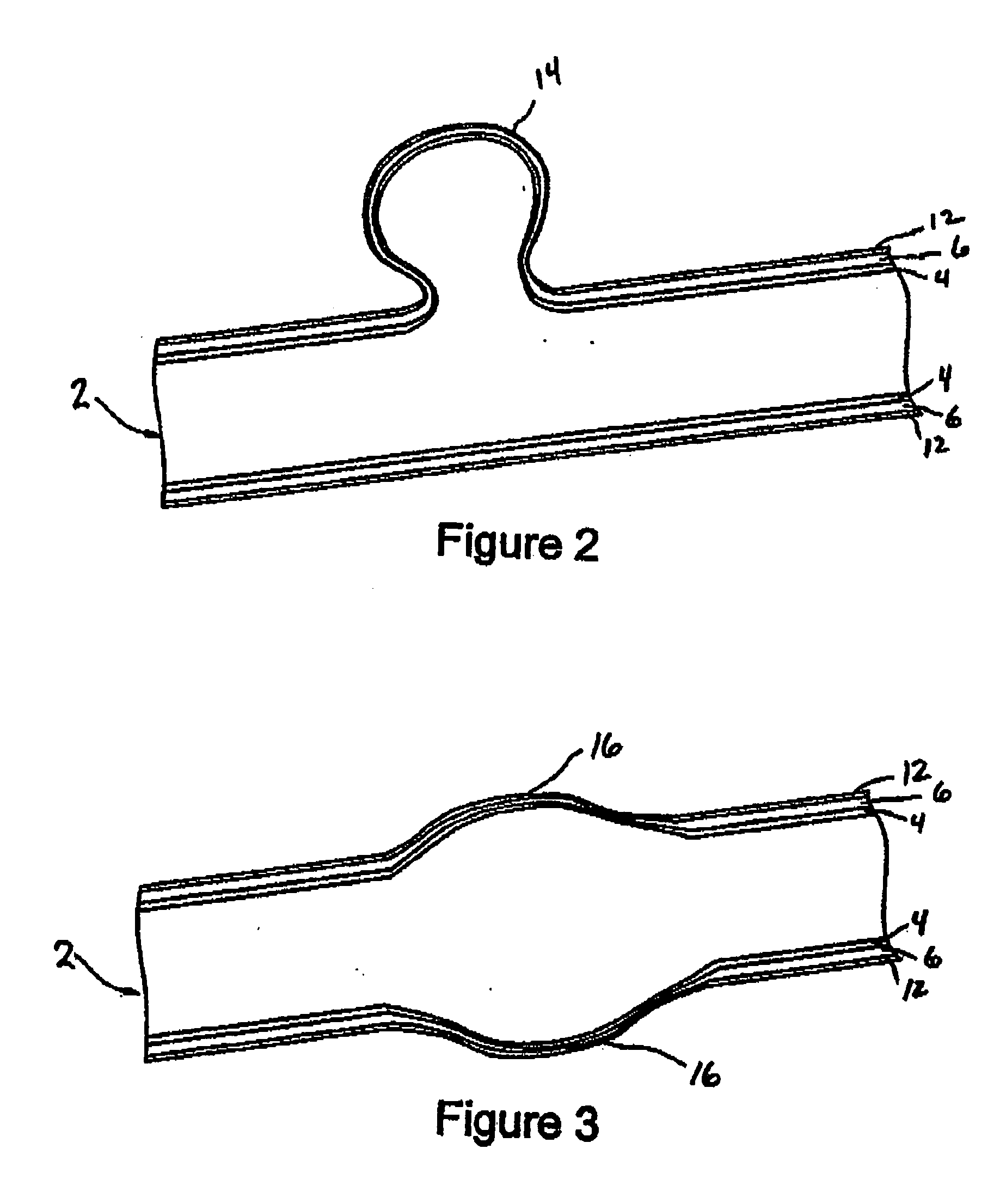Aneurysm treatment devices and methods
a technology for aneurysms and treatment devices, applied in medical science, surgery, diagnostics, etc., can solve problems such as tissue damage, asymptomatic aneurysms, and formation of blood clots, and achieve the effect of reducing or eliminating the risk of implant migration
- Summary
- Abstract
- Description
- Claims
- Application Information
AI Technical Summary
Benefits of technology
Problems solved by technology
Method used
Image
Examples
example 1
Fabrication of a Crosslinked Reticulated Polyurethane Matrix
[0137] The aromatic isocyanate RUBINATE 9258 (from Huntsman) was used as the isocyanate component. RUBINATE 9258, which is a liquid at 25° C., contains 4,4′-MDI and 2,4′-MDI and has an isocyanate functionality of about 2.33. A diol, poly(1,6-hexanecarbonate)diol (POLY-CD CD220 from Arch Chemicals) with a molecular weight of about 2,000 Daltons was used as the polyol component and was a solid at 25° C. Distilled water was used as the blowing agent. The blowing catalyst used was the tertiary amine triethylenediamine (33% in dipropylene glycol; DABCO 33LV from Air Products). A silicone-based surfactant was
TABLE 1Ingredient used (TEGOSTAB ® BF 2370from Goldschmidt). A cell-opener wasused (ORTEGOL ® 501 fromGoldschmidt). The viscosity modifierpropylene carbonate (from Sigma-Aldrich)was present to reduce the viscosity. Theproportions of the components that wereused are set forth in the following table:Parts by WeightPolyol Com...
example 2
Reticulation of a Crosslinked Polyurethane Foam
[0146] Reticulation of the foam described in Example 1 was carried out by the following procedure: A block of foam measuring approximately 15.25 cm×15.25 cm×7.6 cm (6 in.×6 in.×3 in.) was placed into a pressure chamber, the doors of the chamber were closed, and an airtight seal to the surrounding atmosphere was maintained. The pressure within the chamber was reduced to below about 100 millitorr by evacuation for at least about two minutes to remove substantially all of the air in the foam. A mixture of hydrogen and oxygen gas, present at a ratio sufficient to support combustion, was charged into the chamber over a period of at least about three minutes. The gas in the chamber was then ignited by a spark plug. The ignition exploded the gas mixture within the foam. The explosion was believed to have at least partially removed many of the cell walls between adjoining pores, thereby forming a reticulated elastomeric matrix structure.
[0147...
example 3
Histological Evaluation of a Plurality of Crosslinked Reticulated Polyurethane Matrix Implants in a Canine Carotid Bifurcation Aneurysm Model
[0154] An established animal model of cerebral aneurysms was used to evaluate the histologic outcomes of implanting a plurality of cylindrical implants machined from a block of cross-linked reticulated polyurethane matrix as described in Example 2. The three animals were sacrificed at the three-month timepoint to assess tissue response to the cross-linked reticulated polyurethane matrix.
[0155] One of two different implant configurations was used in this experiment. The first configuration was a cylindrical implant measuring 6 mm diameter×15 mm length. The second configuration was a segmented, cylindrical implant measuring 3 mm diameter×15 mm length. To machine the implants, a rotating die cutter was used to cut 3 mm and 6 mm diameter cylinders. The implants were then trimmed to 15 mm in length. Implant dimensions were tested for acceptability...
PUM
 Login to View More
Login to View More Abstract
Description
Claims
Application Information
 Login to View More
Login to View More - R&D
- Intellectual Property
- Life Sciences
- Materials
- Tech Scout
- Unparalleled Data Quality
- Higher Quality Content
- 60% Fewer Hallucinations
Browse by: Latest US Patents, China's latest patents, Technical Efficacy Thesaurus, Application Domain, Technology Topic, Popular Technical Reports.
© 2025 PatSnap. All rights reserved.Legal|Privacy policy|Modern Slavery Act Transparency Statement|Sitemap|About US| Contact US: help@patsnap.com



